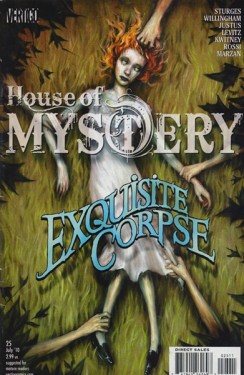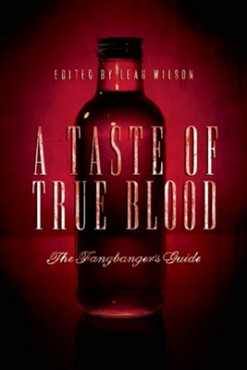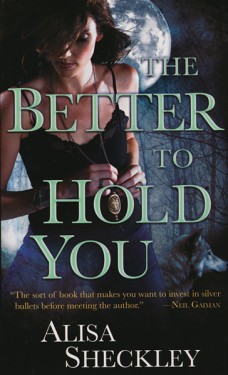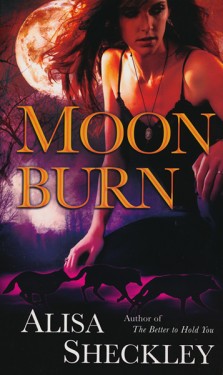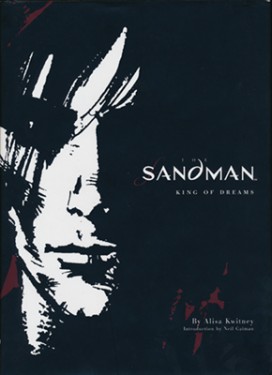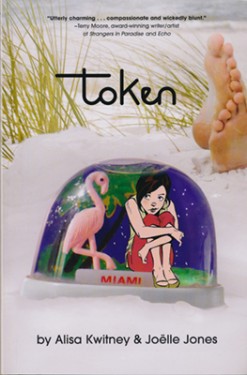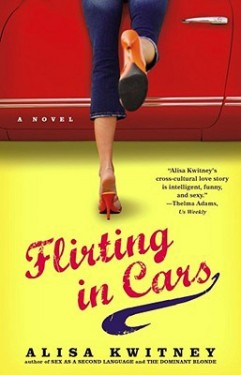Kwitney Report 2012
September 2012
Just finished my Marvel Avengers novel, and now I’m trying to catch my breath and figure out Scrivener before launching into my next project. I’m also trying to resist the siren call of new fall clothes I don’t actually need (schoolboy blazers! Liberty print boyfriend shirts! A choker with a pendant made from Haunted Mansion wallpaper!) Is it just me, or does the slight nip in the air make everyone want to dye their hair auburn? I do realize that this will not transform me into Natasha Romanova, but it’s hard to resist the fantasy of becoming a dangerous, glamorous redhead.
I’m also catching up on my reading: Finished Gone, Girl, and am onto Tana French’s wonderful In the Woods. I’ve got a batch of other things I’m dying to dive into, including an old book about everyday life in tsarist Russia, which I ordered off the internet. Oh, and I’m also reading Caitlin Moran’s hysterical How to be a Woman and Eric Maisel’s book Coaching the Artist Within. My father gave me Maisel’s book The Van Gogh Blues in 2005, and I’ve dipped into it again and again. Now I’m going to Maisel’s intensive writing course at the Omega Institute in Rhinebeck this October – a reward for managing to complete my Avengers book in three months (not my idea, that’s how long they gave me!)
I’m also looking forward to catching up on my TV watching. I’m late to the party for Dr. Who and Game of Thrones, but I’m finally joining. Also want to try Homeland. I just discovered a weird, Secretary-like movie called Girl on a Bridge with Vanessa Paradis as a suicidal waif rescued by a sexy circus knife-thrower. (I was doing research on circus Impalement Arts because the Avengers’ Hawkeye was trained in them.)
January 2012
How to Rewrite a Novel without Losing Momentum, Faith, or Your Mind
In Greek mythology, Sisyphus is condemned to push a boulder up a hill, watch it roll back down, and then start all over again. When you begin a rewrite of a novel, you may feel like Sisyphus had it easy. After all, at least he knew exactly what he had to do.
You, on the other hand, have a tangled ball of plots and subplots that aren’t quite working the way you (or an editor or agent) want them to work. You may need to kill some characters and replace them with others. Worst of all, there’s great stuff in there, all mixed up with the not-so-great, and you’re not sure how to separate the wheat from the chaff.
In your lowest moments, you may think you would rather throw the whole thing out and write something completely different. You may want to beat your head against the writing desk. You may actually lie down on the rug with the dog and make small whimpering noises until the dog huffs a sigh and gets up and walks away.
How do I know these things? I know these things because I have been there. These are my tricks for getting up off the dog rug of despair and enjoying – yes, that’s right, I said enjoying – the rewriting process.
1) Rewrite your synopsis.
Some writers are “pantsers” and write by the seat of their pants. Some writers are planners and use index cards or virtual index cards to chart every aspect of the book. Most writers, I suspect, fall somewhere in between. For me, a synopsis is like a rough driving plan to get me from New York to Miami, with room to take detours and taking in local color without losing track of my ultimate destination, or forgetting to visit Aunt Ida in Georgia.
Besides, rewriting a synopsis is a lot less scary than tackling the whole book blind. When rewriting your synopsis, you should:
a) Figure out the character arc of your protagonist. Then, ideally, figure out the character arc of your antagonist. How about the foil, (often the protagonist’s best friend?) Does the love interest have a character arc? Is there a mentor in the story, and if so, does she or he get a character arc?
I would say that at the very least, every point of view character requires a clearly defined character arc.
b) Think of the key scenes. Sometimes the key scenes may already exist in the previous draft. (Yeah, that’s right, the book you slaved over for months or years is now a draft.) Sometimes you may need to jettison the old structure in order to take advantage of a new possibility.
For example, in my rewrite of a novel about a woman haunted by the ghost of her ex-boyfriend, I added a character (a perfect on paper living boyfriend) who wants to take my protagonist away on a romantic weekend. For the longest time, I kept thinking I needed to have my protagonist lose the not right boyfriend before the trip took place, because I was still wedded to my old structure. Then I realized how funny it would be if my ghost decided to tag along, uninvited, on the romantic weekend.
One way to think of key scenes is to figure out the pivotal moments of the plot, using the writer’s journey template, or any of the tried-and-true screenplay beats.
Another way is to think of what you want to write. Do you long to write a great comedy set piece, where all your characters come together? Do you want to write a great dramatic scene, where a character is forced to make a wrenching choice? Every story has certain scenes – not always crucial ones, mind – that really stand out. In the movie Enchanted, there is a throwaway scene where the princess, trilling a Snow White style song, enlists the aid of thousands of cockroaches to clean an apartment. In the Hunger Games, one of my favorite scenes is one in which the gruff, no-nonsense huntress heroine meets her tittering crew of makeup and costume people.
c) Think of tests. Think of ways to test your protagonist by playing on his or her weaknesses — or on his or her hidden strengths.
d) Don’t forget food. Eating and drinking are a huge part of our daily lives, and sometimes they get left out of stories. It doesn’t take long for hunger or thirst to occupy most of our thoughts, and including food in a story can help ground it and make it feel real. You can use this for scenes where you need to deliver expository information, or want to play with abstract concepts.
2) Okay, now go through your original manuscript and tag pages or phrases that absolutely should be saved. Make a list and check back with it as you embark on your rewrite. (This keeps you from constantly having to reread the old draft, which takes a lot of time.) You may find, as I did, that some of these do wind up getting cut, but by the time you find that out you won’t feel as bad about it.
3) Now you have a plan for moving forward, a set of fun things you want to write, and an easily accessible check list of things from the old draft that you know you want to include. You’re ready to get rewriting. And remember:
“Books aren’t written. They’re re-written.” Michael Crichton.






